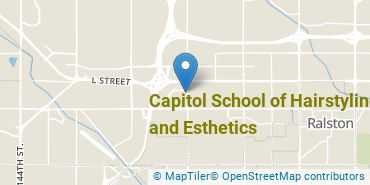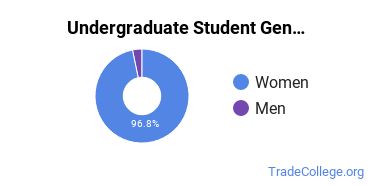Capitol School of Hairstyling and Esthetics Trade Programs
Located in Omaha, Nebraska, Capitol School of Hairstyling and Esthetics is a private for-profit institution. The surrounding area of the school is a good match for students who enjoy city life.
Featured schools near , edit
Where Is Capitol School of Hairstyling and Esthetics?

Contact details for Capitol School of Hairstyling and Esthetics are given below.
| Contact Details | |
|---|---|
| Address: | 10803 John Galt Blvd., Omaha, NE 68137-2325 |
| Phone: | 402-333-3329 |
| Website: | www.hairschoolomaha.com |
Can I Afford Capitol School of Hairstyling and Esthetics?
Student Loan Debt
Almost 66% of college students who graduated with the class of 2018 took out student loans, but that percentage varies from school to school. At Capitol School of Hairstyling and Esthetics, approximately 51% of students took out student loans averaging $4,626 a year. That adds up to $18,504 over four years for those students.
Capitol School of Hairstyling and Esthetics Undergraduate Student Diversity
Gender Diversity
Of the 160 full-time undergraduates at Capitol School of Hairstyling and Esthetics, 3% are male and 97% are female.

Racial-Ethnic Diversity
The racial-ethnic breakdown of Capitol School of Hairstyling and Esthetics students is as follows.

| Race/Ethnicity | Number of Grads |
|---|---|
| Asian | 1 |
| Black or African American | 6 |
| Hispanic or Latino | 16 |
| White | 129 |
| International Students | 0 |
| Other Races/Ethnicities | 8 |
Capitol School of Hairstyling and Esthetics Trade School Concentrations
The table below shows the number of awards for each concentration.
| Major | Basic Certificate | Undergraduate Certificate | TOTAL |
|---|---|---|---|
| General Cosmetology/Cosmetologist | 0 | 82 | 82 |
| Aesthetician/Esthetician & Skin Care Specialist | 64 | 0 | 64 |
| Cosmetology, Barber/Styling, & Nail Instructor | 6 | 0 | 6 |
| TOTAL | 70 | 82 | 152 |
References
*The racial-ethnic minorities count is calculated by taking the total number of students and subtracting white students, international students, and students whose race/ethnicity was unknown. This number is then divided by the total number of students at the school to obtain the racial-ethnic minorities percentage.
More about our data sources and methodologies.
Featured Schools
 Request Info
Request Info
|
Southern New Hampshire University You have goals. Southern New Hampshire University can help you get there. Whether you need a bachelor's degree to get into a career or want a master's degree to move up in your current career, SNHU has an online program for you. Find your degree from over 200 online programs. Learn More > |
